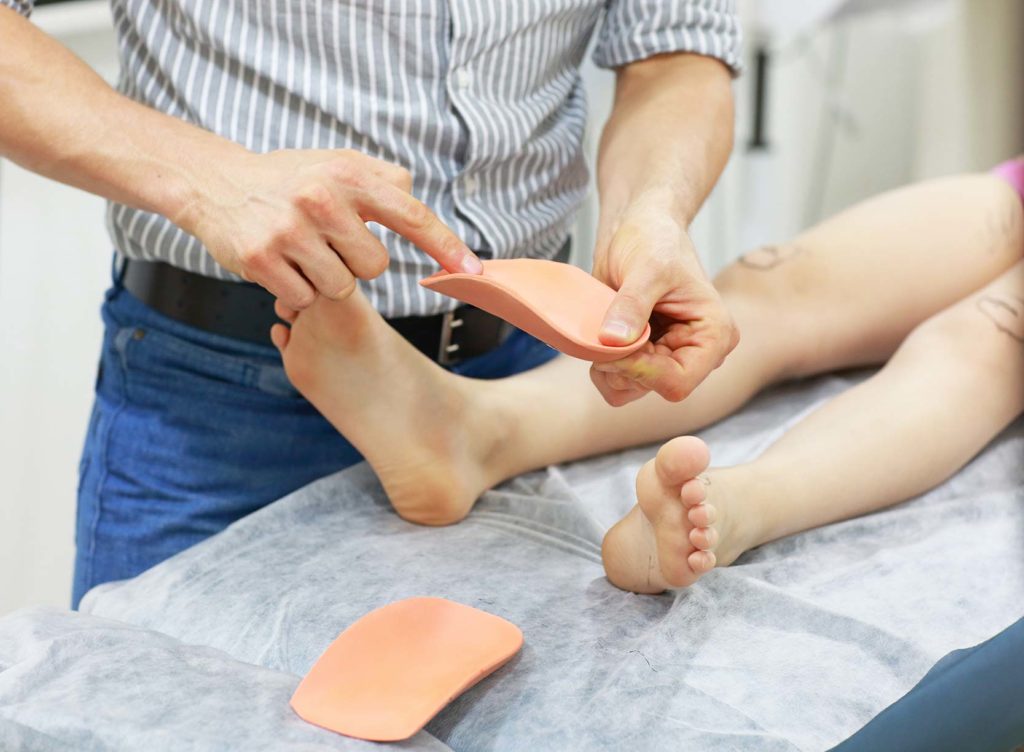When a limb needs to be lengthened, or a bone needs to be corrected, there are several orthopedic non-surgical and surgical treatments available, depending on the severity of the issue and the patient’s medical history. Your doctor or orthopedic surgeon will carefully evaluate what is appropriate for the case considering your child’s age, her/his medical history, the physical examination, imaging, and blood and/or nerve tests.
What is the most common bone deformity surgical treatment?
The most common surgical method to treat bone deformities consists of carefully cutting the bone on purpose and then lengthening or correcting the limb. This corrective procedure, called osteotomy, may be performed with either internal or external fixation devices (more rarely together) to stabilize the cut bone.
Orthopedic internal fixation allows to correct the bone deformity all at once. The surgeon will operate your child under general anesthesia, and will apply metal rods, screws or plates – that will remain in place under the skin after orthopedic surgery – to adjust the bones.
Orthopedic external fixation, with metal rods or pins located outside the limb, is recommended in case of a quite complex bone deformity, which cannot be repaired using open reduction with an internal fixation device, and which is safer to correct gradually, avoiding injury to soft tissues such as nerves or blood vessels.
How can a bone deformity be corrected with an orthopedic external fixator?
An external fixation device allows the new bone to strengthen and harden while growing in the new shape/length. To achieve the bone deformity correction, the external fixator needs gradual adjustments to help the new bone tissue to grow into place over time. When the orthopedic surgeon is happy with the bone’s length, shape and alignment, adjustments will no longer be needed. However, your child will still wear the external fixator, which will support the limb while the new bone tissue hardens and the limb becomes stronger (Bone healing process). These two phases – the “correction” and “consolidation” steps together – usually last from 4 to 12 months.
At the end of the bone fracture healing process, the external fixator will be removed. Your child may need to wear a cast for a short while after the fixator frame has been removed.
What is a hexapod-based system?
A hexapod-based system is a new and advanced method for bone deformity correction. It combines two parts: hardware and software. The hardware is made of metal rings that are anchored to the bone by screws and wires. The software incorporates imaging to determine the precise measuring and positioning of the fixator and allows for its simultaneous adjustment at multiple angles. This innovative system lets children with bone injuries/deformities receive customized care that can optimize clinical, aesthetic and functional outcomes.
How can a bone deformity be corrected with guided growth plates?
In children, bone deformity can gradually be corrected by stapling one side of the growth plate. By doing this, one side of the growth plate is harnessed, while the other side goes on growing. As soon as the bone is straight, the staple can be removed to allow symmetric development of the whole growth plate. This orthopedic surgical technique has the advantage to be minimally invasive and it is often performed on an outpatient basis.
 Share on facebook
Share on facebook
 Share on twitter
Share on twitter
 Share on linkedin
Share on linkedin
 Share on email
Share on email

